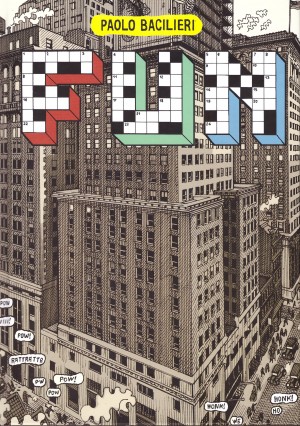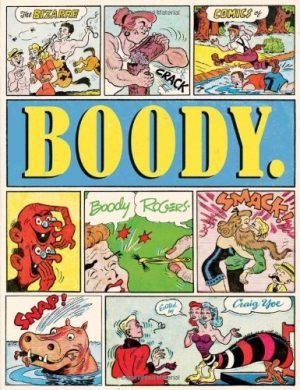Review by Win Wiacek
The art and calling of mesmerising children is a rare one, but the masters of such an imaginative discipline – whether through words or pictures – have generally become household names. Yet apparently, these days, nobody remembers George Carlson.
Carlson was both unique and prolific: a surreal absurdist and sublimely stylised magician of children’s entertainments as well as a diligent commercial artist, tireless, dedicated educator, print illustrator and designer. He loved games and puzzles and was besotted with all aspects of print media. A son of Swedish immigrants, he plied his trade(s) from New York and Connecticut from 1903 to 1962, producing everything from editorial cartoons, book jackets – including the iconic first edition of Margaret Mitchell’s Gone with the Wind – magazine illustration, typographical design, games, sheet-music, utterly unique advertising materials, books, pamphlets and so much more. And let’s not forget some of the original, eccentric and captivating comics for youngsters America or the world has ever seen.
This superb and colossal compendium, the brainchild and magnum opus of extreme fan Daniel Yezbick, is the result of fifteen years toil, superbly detailing every aspect of the lost master’s life, stuffed to overflowing with intimate photos, wonderful anecdotes and page after page of glorious, enchanting stories, poems, puzzles and pictures.
Yezbick takes us through Carlson’s multi-faceted career, beginning with ‘The Jolly Books of the Puzzling Private’, describing early works and the artist’s two decades writing, illustrating, designing and creating engaging and educational games and puzzles for influential children’s pulp magazine John Martin’s Book. Also heavily featured is Carlson’s first great creation Peter Puzzlemaker, whose visual and verbal conundrums fascinated and expanded the minds of generations of kids. In the field of children’s literature, his most important contribution was his superb illustrations for Howard R. Garis’ ubiquitous and bucolic tales of venerable rabbit grandfather figure Uncle Wiggily.
Hundreds of Carlson’s illustrations feature, but the USP for many will be his comics. A brief essay reveals the history of the illustrator’s short foray into comics and his legendary anthology Jingle-Jangle Comics, launched in 1942. Running until 1949 it headlined two features exclusively written and drawn by Carlson. The first example is ‘The Pie-Faced Prince of Old Pretzleburg’, a manic, pun-filled procession of insane and wholesome nonsense relating the fast and frantic screwball adventures of royal mooncalf Prince Dimwitri and his inept inamorata Princess Panetella Murphy. Seven further strips follow, absurdist adventures in rumbling, tumbling happily tumultuous word and picture parables. They involve living jet-powered kites, assorted bandits, scurrilous scarecrows, stolen violins, fabulous beasts, talking animals, baking, belligerent unicorns and more. Carlson brought a deliciously skewed viewpoint to the still-evolving syllabary of comics, including hilariously punny labels, signs everywhere and in some shots weary birds rest on free-floating word balloons.
Without doubt, however, Carlson reserved his greatest flights of fancy for the inventive fractured fairy stories that comprised the eponymous ‘Jingle Jangle Tales’. These are one-off fables starring peculiarly reinvented standbys like princesses and knights, interacting with astonishing animals and far-from-inanimate objects all imbued with a bravura lust for life and laughs. Six are provided.
Harlan Ellison correctly dubbed Carlson’s sublimely inviting whimsy for the very young as “Comics of the Absurd” and these cartoon capers are urgently in need of their own complete and comprehensive collection. If you have an abiding love of creative fantasy and the opportunity to read to children, you simply must open their eyes to wonderment, enlightenment, entertainment and education in this timelessly addictively accessible chronicle. However, be warned, actual comics account for only around a sixth of the pages.







